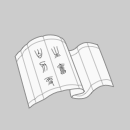
医学寄生虫学
全新正版 极速发货
¥ 91.36 7.1折 ¥ 129 全新
库存2件
广东广州
认证卖家担保交易快速发货售后保障
作者编者:彭鸿娟//夏超明//周怀瑜|责编:李龙传//董珊
出版社郑州大学
ISBN9787564572433
出版时间2020-12
装帧平装
开本其他
定价129元
货号1202464439
上书时间2024-06-14
- 最新上架
商品详情
- 品相描述:全新
- 商品描述
-
作者简介
目录
Section 1 Pandect for Medical Parasitology
Chapter 1 Introduction to Medical Parasitology
1.1 The Definition of Medical Parasitology
1.2 The Prevalence and Impairments of Parasitoses
1.3 The Subject Aims and Learning Methods for Medical Parasitology
Chapter 2 Biology of Parasites
2.1 Symbiosis and Parasitism
2.2 Categories of Parasites and Hosts
2.3 Life Cycle of Parasites
2.4 Classification and Designation of Parasites
Chapter 3 Host-parasite Relationship
3.1 The Effects of The Parasites on Hosts
3.2 Host's Responses to The Parasites
3.3 The Result of Host-parasite Interaction
Chapter 4 The Immunology of Parasitic Infection
4.1 Parasite's Antigen and Immune Response
4.2 Immune Pathology Induced by Parasitic Infection
Chapter 5 The Characteristics of Parasitic Infection
5.1 The Features of Parasitic Infection
5.2 The Clinic Symptoms of Parasitosis
Chapter 6 Prevention and Control of Parasitosis
6.1 Epidemic Links of Parasitosis
6.2 Epidemic Factors of Parasitosis
6.3 Control Principles for Parasitosis
Section 2 Medical Protozoology
Chapter 7 Introduction to Medical Protozoa
7.1 General Features of Protozoa
7.2 Classification of Protozoa
Chapter 8 Lobosea (Amoeba)
8.1 Summary and Classification of Lobosea (Amoeba)
8.2 Entamoeba Histolytica
8.3 Nonpathogenic Amoeba
8.4 Free-living (opportunistic) Amoeba
Chapter 9 Flagellates
9.1 Summary and Classification of Flagellates
9.2 Intestinal and Genital Flagellates
9.3 Other Intestinal Flagellates of Minor Importance
9.4 Hemoflagellates
Chapter 10 Sporozoa
10.1 Summary and Classification of Sporozoa
10.2 Malarial Parasites
10.3 Toxoplasma Gondii
10.4 Cryptosporidium Parvum
10.5 The Other Sporozoa
Chapter 11 Ciliates
11.1 Morphology
11.2 Life Cycle
11.3 Epidemiology
11.4 Pathogenesis
11.5 Treatment and Control
Section 3 Medical Helminthology
Chapter 12 Summary and Classification of Helminths
Chapter 13 Trematodes
13.1 Summary and Classification of Trematodes
13.2 Blood Flukes
13.3 Liver Flukes
13.4 Lung Fluke
13.5 Intestinal Fluke
Chapter 14 Cestodes
14.1 Summary and Classification of Cestodes
14.2 Pseudophyllidean Cestodes
14.3 Cyclophyllidean Cestodes
Chapter 15 Nematodes
15.1 Summary and Classification of Nematodes
15.2 Intestinal Nematodes
15.3 Somatic Nematodes
15.4 Nematodes of Lower Animals That Rarely Infect Human
Section 4 Medical Entomology
Chapter 16 Introduction to Medical Arthropods
16.1 The Characteristics of Medical Arthropods
16.2 Classification of Medical Arthropods
16.3 Harmful Effects of Medically Important Arthropods to Humans
16.4 Arthropods Prevention and Control
Chapter 17 Class Insecta
17.1 Introduction to Medical Insects
17.2 Mosquito
17.3 Phlebotomus Sandfly
17.4 Biting Midge
17.5 Black Fly
17.6 Tabanid Fly
17.7 Fly
17.8 Flea
17.9 Louse
17.10 Cimex Species
17.11 Blattaria Species
Chapter 18 Class Arachnida
18.1 Introduction to Arachnida
18.2 Tick
18.3 Gamasid Mite
18.4 Chigger Mite
18.5 Sarcoptes Scabiei and Demodicid Mite
Section 5 Laboratory Diagnosis of Parasitic Diseases
Chapter 19 Introduction to Laboratory Diagnosis
Chapter 20 Pathogenic Diagnosis
20.1 Examination of Feces
20.2 Examination of Blood
20.3 Examination of Urogenital Specimen, Sputum, Cerebrospinal Fluid and Duodenal Drainage Material
20.4 Examination of Aspirates from Lymph Node, Spleen, Liver and Bone Marrow
20.5 Biopsy
20.6 Culture Methods in Diagnosis
Chapter 21 Immune Diagnosis
21.1 IHA
21.2 DFA
21.3 IFAT
21.4 ELISA
21.5 IB
内容摘要
本书主要用于临床医学和预防医学专业学术交流,突出了对全世界有害的寄生虫病的介绍,主要
包括医学寄生虫和节肢动物的形态,生命周期,致病性,诊断,流行病和预防,具有较强的系统性和严密的科学性。
— 没有更多了 —












以下为对购买帮助不大的评价